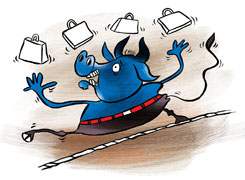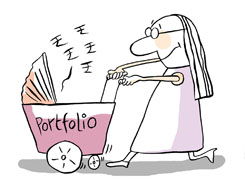50-Year-Old Freelancer Seeks Investment Advice for Portfolio
Janak Patel |23 Answers |Ask -Follow
MF, PF Expert - Answered on Oct 18, 2024
He is the CEO and founder of InfiniumWealth, a firm that specialises in designing goal-specific financial plans tailored to help clients achieve their life goals.
Janak holds an MBA degree in finance from the Welingkar Institute of Management Development and Research, Mumbai, and has over 15 years of experience in the field of personal finance. ... more

Please advice on my portfolio. I'm 50 years old married freelancer with no children so end up doing investments through STP's. Right now I have 1 crore in ICICI Agressive Hybrid, 1 crore in HDFC Balanced Advantage, 50 lakh PMS with ICICI Contra, 50 Lakh PMS with Abbakus. 30 Lakhs HDFC Mid Cap. 30 Lakhs Oswal Business Cycle. Apart from that I have 20 lakhs in PPF. Please advice
Your portfolio is a mix of investments across MFs, PMS and PPF.
Assuming PMS is all equity, the asset allocation reflects approximately an 80:20 ratio in Equity:Debt respectively, which seems fine.
As your objectives or goals are not available, it would be difficult to indicate if they suit your profile.
Most of the MF schemes mentioned are fine with a good track record. The exception is the Business Cycle scheme - this is a new scheme and being sectoral it will attract very high risk, its approximately 10% of your portfolio value so continue if you understand the risk.
Alternately you can consider a Flexi-cap or Multi-cap MF scheme that are well diversified and for a 7+ years of time horizon.
PMS services - if your experience with the PMS services are good and they meet your expectations for returns, then do continue.
PPF - plan to utilize it as a tax efficient instrument to withdraw funds at the time of retirement. Continue to contribute max possible and complete lock-in period of 15 years and keep extending the account with contributions. Over the next 10-15 years you can accumulate a good corpus which will be completely tax free for withdrawal.
An observation/suggestion as its not indicated - As you are freelancer, suggest emergency funds - please plan to have at least 6-9 months expenses in an investment which has high liquidity and safety e.g. FDs. In extreme eventualities like the pandemic or a personal crisis, this fund can support the immediate needs.
As you are going to be moving towards your retirement in a decade or so, I recommend you contact a Certified Financial Planner who can add value to your portfolio and provide a personalized evaluation and guidance taking into consideration your family profile, goals and requirement of the future while assessing risk and tax efficiency.
Regards
Janak Patel
Certified Financial Planner.
You may like to see similar questions and answers below
Ulhas Joshi | Answer |Ask -Follow
Mutual Fund Expert - Answered on Jun 02, 2023
Ulhas Joshi | Answer |Ask -Follow
Mutual Fund Expert - Answered on Aug 18, 2023
Ramalingam Kalirajan |8176 Answers |Ask -Follow
Mutual Funds, Financial Planning Expert - Answered on May 29, 2024
Kirtan A Shah |77 Answers |Ask -Follow
MF Expert, Financial Planner - Answered on Sep 29, 2023
Milind Vadjikar |1147 Answers |Ask -Follow
Insurance, Stocks, MF, PF Expert - Answered on Apr 02, 2025
Milind Vadjikar |1147 Answers |Ask -Follow
Insurance, Stocks, MF, PF Expert - Answered on Apr 02, 2025
Milind Vadjikar |1147 Answers |Ask -Follow
Insurance, Stocks, MF, PF Expert - Answered on Apr 02, 2025
Ramalingam Kalirajan |8176 Answers |Ask -Follow
Mutual Funds, Financial Planning Expert - Answered on Apr 02, 2025
Mayank Chandel |2163 Answers |Ask -Follow
IIT-JEE, NEET-UG, SAT, CLAT, CA, CS Exam Expert - Answered on Apr 02, 2025
Mayank Chandel |2163 Answers |Ask -Follow
IIT-JEE, NEET-UG, SAT, CLAT, CA, CS Exam Expert - Answered on Apr 02, 2025
Mayank Chandel |2163 Answers |Ask -Follow
IIT-JEE, NEET-UG, SAT, CLAT, CA, CS Exam Expert - Answered on Apr 02, 2025
Mayank Chandel |2163 Answers |Ask -Follow
IIT-JEE, NEET-UG, SAT, CLAT, CA, CS Exam Expert - Answered on Apr 02, 2025
Mihir Tanna |1042 Answers |Ask -Follow
Tax Expert - Answered on Apr 02, 2025
Radheshyam Zanwar |1513 Answers |Ask -Follow
MHT-CET, IIT-JEE, NEET-UG Expert - Answered on Apr 02, 2025



























